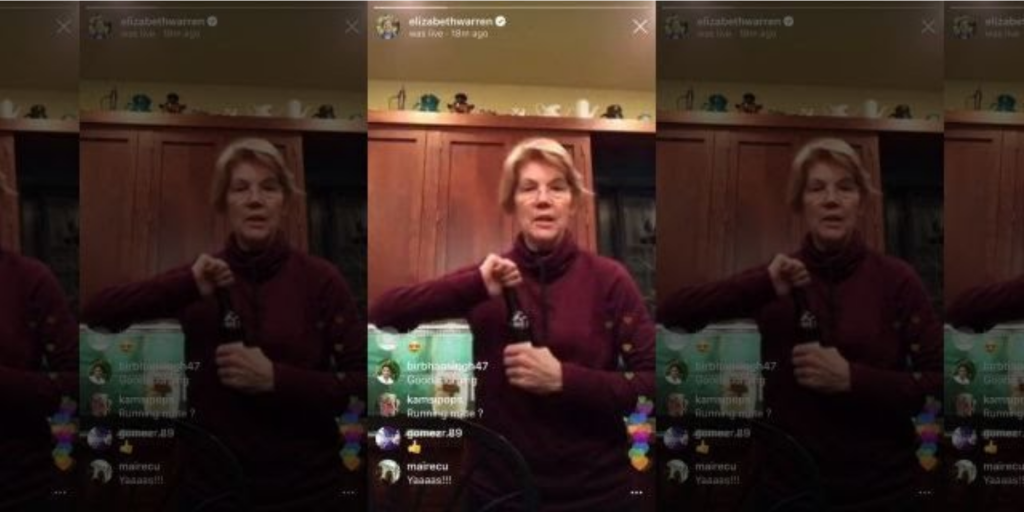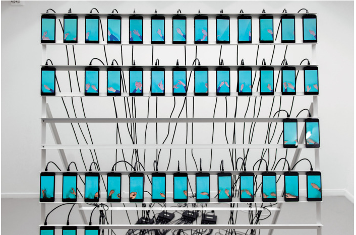Or, how Lizzie Warren (probably) made sure she had Instagram views.

Super-hip, septuagenarian multi-millionaire Lizzie “Fauxcahontas” Warren took to the inter-webs and the social medias yesterday in a genuine, homespun, all-American moment of camaraderie with the common folk. Standing in the kitchen of her quaint little mansion in Cambridge, the revered and much-loved 1/1024th Native American icon had a beer in the company of her hubby and her dog and shared her humanity with adoring fans.
Or, not so much. In a world where most normal people would rather watch an embalming than a live stream of a politician faking authenticity, you have to ask how did Warren make sure she would have some minimum number of viewers for her little fireside chat?
I can’t find any stats on how many viewers Warren had, but you can be sure she had a plan in place to ensure a minimum audience. She is not about to throw a party and leave any risk that no one will come.
So how do you guarantee that you get views on the internet? The best way is called a click farm. While we can’t know for sure, many of the so-called InstaGram “views” may not have been fans at all. Or even humans.
Advertising and Social Media Metrics Are Now Driven Mostly by Fakery.
In this December 26, 2018 article in New York Magazine’s Intelligencer section, author Max Read takes an in-depth look at the fakery, fraud, hucksterism, abuse and malicious behavior that now dominates the world of clicks, views, fans, follows, and social posts.
Read refers to the “inversion” – a point feared by YouTube employees where the number of bot or fake views on the company’s video platform so far exceeds those of actual humans that the company’s algorithmic detection programs could theoretically begin to view bots as human and humans as bots. It turns out we’ve bounced around that threshold for some time.
The problem is not limited to YouTube or videos. It is infecting every aspect of every type of online content distribution where the content is used to draw views or clicks or any type of interaction and money changes hands for some form of advertising. Which is pretty much everything.
The are really two problems. One is that most of the internet advertising and social media metrics are bullshit to begin with. The other is that the metrics are easy to fake. During my days as an analyst it was fairly common to talk with marketing people who were enamored of useless metrics such as email opens and likes and follows. Without some kind of metrics the whole social media thing just seems like hot air, but that’s because it is hot air and the metrics were developed to try and make it seem real — not the reverse. The metrics were always fake. Now the fake metrics are being gamed up and down with fake values. There’s a certain irony in that.
But the bottom line in the article is that click farms are big and getting bigger. It’s a business, an organized effort just like organized crime or organized fraud of any sort.
I do not know if little Lieawatha actually used a click farm, but I don’t need to. All that is necessary is to know that she would not, under any circumstance, hold a social media event and risk it having only a handful of views. That’s not even arguable. So it is 100% certain that someone in her organization made arrangements with one or more of the methods discussed in the article to kick in if needed. It’s easy, It’s accessible. And it’s fake. What’s not to love for a politician?
